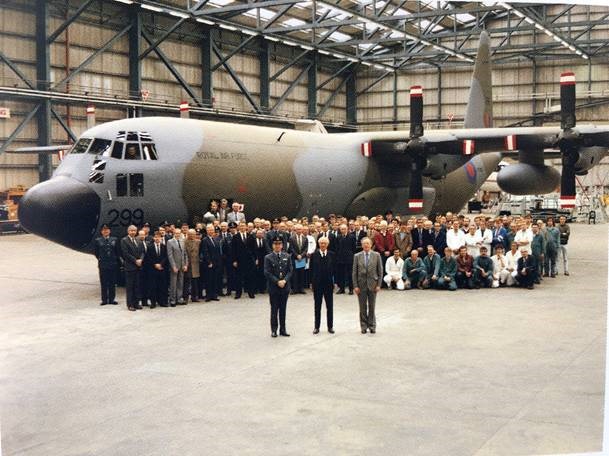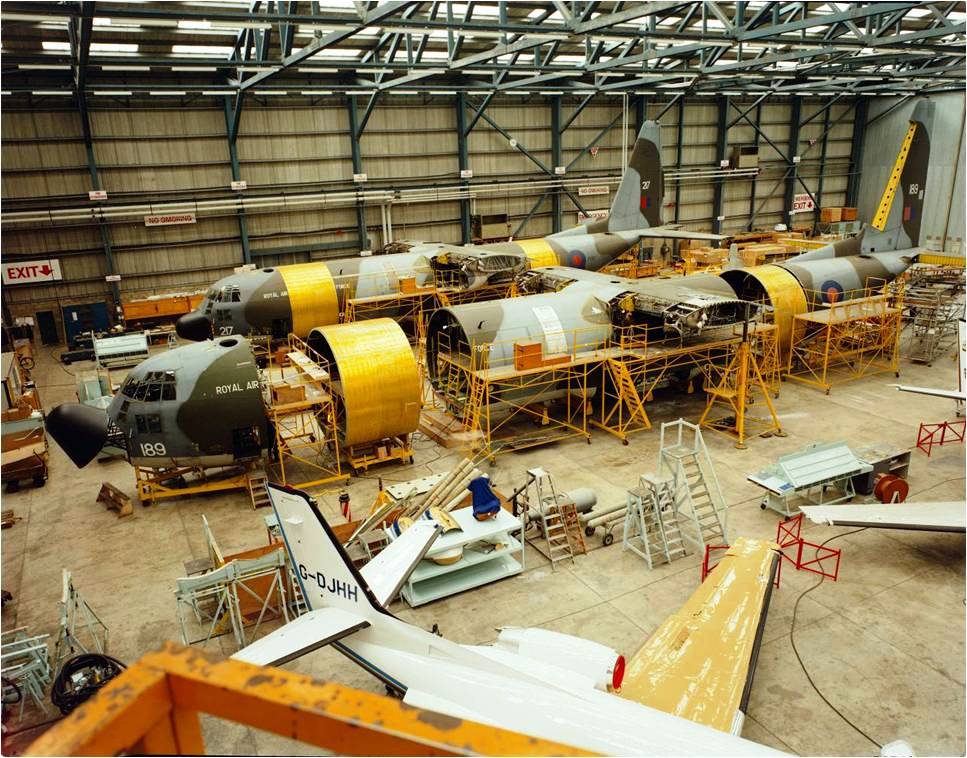
Michael’s fascination with aircraft started at a young age. Luckily, one of Michael’s neighbors worked at Marshall, so he introduced Michael to the recruitment team, and he was delighted to be offered a space on the highly coveted Marshall apprenticeship programme in 1983 as an apprentice Airframe Fitter.
Michael recalled that his first day in the training center was a Tuesday towards the end of August. The reason that Michael remembers that day so clearly is because he played county cricket every Monday and during his training session the night before he started his apprenticeship, he was hit hard in the face by a cricket ball, he probably swallowed a tooth and spent the rest of the afternoon in hospital. Thankfully, he was medically cleared to start in the workshop the following day, however, his face looked a bit worse for wear, and it was not the first impression Michael was hoping to make. Michael’s parents dropped him off that morning as he couldn’t speak due to his injury and could only eat soup through a straw for the first four weeks on the course. Michael’s face and mouth looked a terrible mess, and this earned him the nickname, Rosie. Rosie Apple hard sweets were very popular at the time and Michael’s injury made it look like he had a handful of the marble sized candies shoved in his mouth. Thankfully the nickname hasn’t followed Michael throughout his career, but there are still alumni out there who will remember Michael as Rosie.

Michael has fond memories of his time in the apprentice workshop and was particularly grateful for the precision he learned under the tutelage of Robin Lipscombe and Keirron Mascall. This disciplined approach went a long way to help him when he entered the hangars and saw the experienced members of the team working to the minute tolerances that Marshall technicians and fitters are known for across the industry. Substandard work was always unacceptable and never made it past the eagle eyes of Robin and Keirron because mistakes in the hangars cost the company time and money to rectify. This meant that apprentices like Michael were competent and able to add value as soon as they left the workshop and entered the workplace.
Michael started working on flying controls and components. This was a great introduction to working on aircraft as he had the opportunity to work with some very experienced people who helped to develop his skills further and build his confidence before moving on to work on the larger C-130 Hercules and special projects. Michael’s first exposure to working on aircraft was on the RAF Stretch Programme, which was a special project where the engineers extended the length of the C-130 aircraft by adding a section to the middle of the shorter aircraft to lengthen the fuselage to increase the capacity to carry cargo. This was following the Lockheed Martin launch of a longer C-130 and the RAF wanted to match the same capacity, so instead of buying new aircraft, Marshall installed plugs into the existing shorter aircraft. This was a prestigious project for Marshall as they extended half the RAF fleet of around 30 aircraft and Michael was proud to be involved with working on the final few that went through the hangars. When that project ended, Michael spent some time working on modifications on the “Snoopy” aircraft (a modified C-130 designed to perform meteorological research) and then he transferred to the team who worked on C-130 fleets for our foreign military customers where he mainly worked on the engines for his remaining time in the hangars.

Michael’s work in the hangers came to an abrupt and unexpected end around 1997 due a ruptured cruciate ligament that happened while he was playing football. Although Michael had many months off work to recover, his knee never regained full strength, which made undertaking the physically demanding work on the aircraft more challenging. Michael decided to move into a role in the commercial department as an estimator working on C-130 projects and business jets. The practical skills he attained in the hangers working on the aircraft gave Michael the experience and skills needed to estimate the costs and logistics of prospective contracts. Michael found great satisfaction and enjoyment in his career shift calculating the costs of new contracts, planning the resources required to complete them, and the logistics involved in making them successful.
While the work environment and objectives may have been different to the hangars, Michael dived into his new role and oversaw many successful projects that could now be considered landmarks in Marshall’s history such as the C-130 Blue Angels contract. In addition to this, Michael also estimated and worked on the contract for the USMC C-130 MRO, which is a huge accomplishment for Marshall, and Michael was proud to play a crucial role in making this happen.
"I haven’t worked in the hangers for around 23 years, but I still have that skillset of technical aircraft knowledge. Those sorts of things are probably my best assets as I know what needs to be done and the resources required to get the job. Also, the time in the training center, learning my trade and progressing through my career – It all contributed to where I am now… It has come full circle: I started with Hercules, and I am still doing it today and to be part of it is really satisfying”
If you are a former Marshall Engineering Apprentice and you would like to know more about our Alumni Network, please click below.